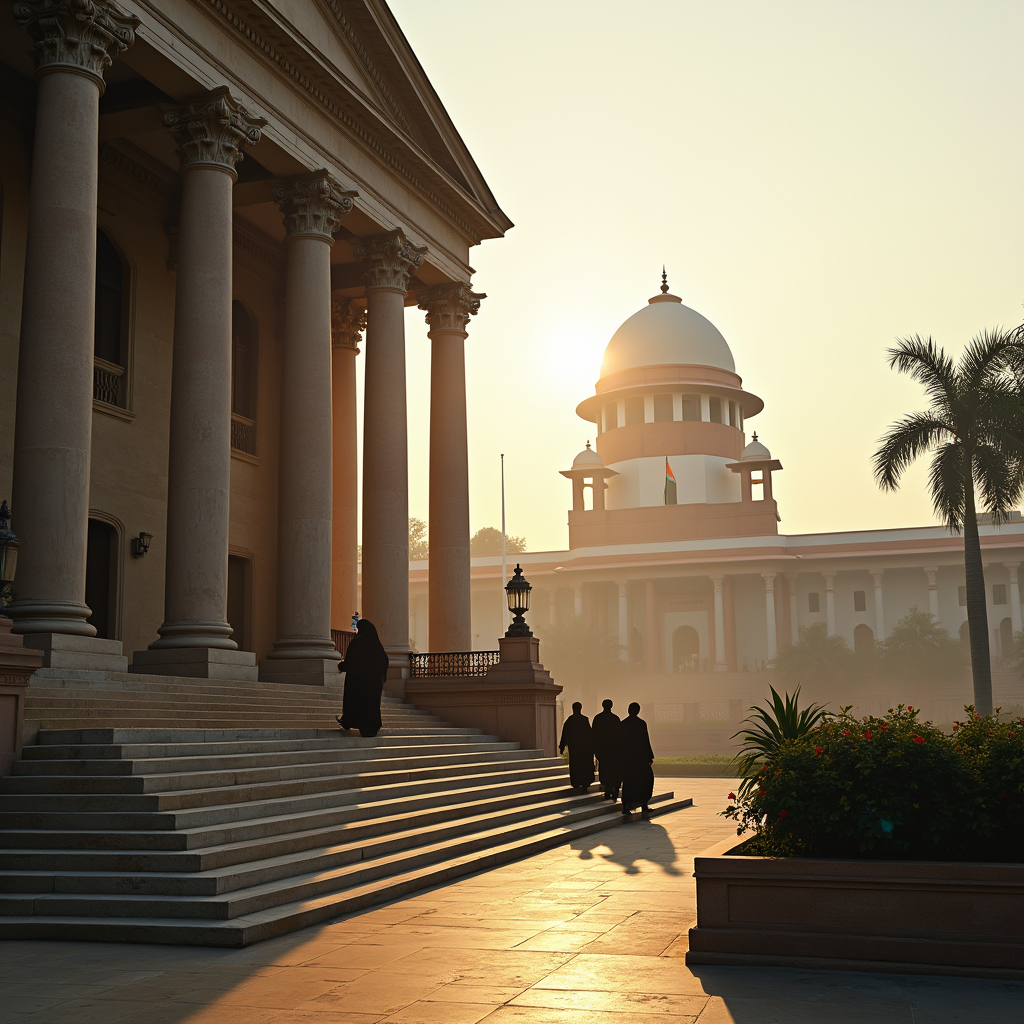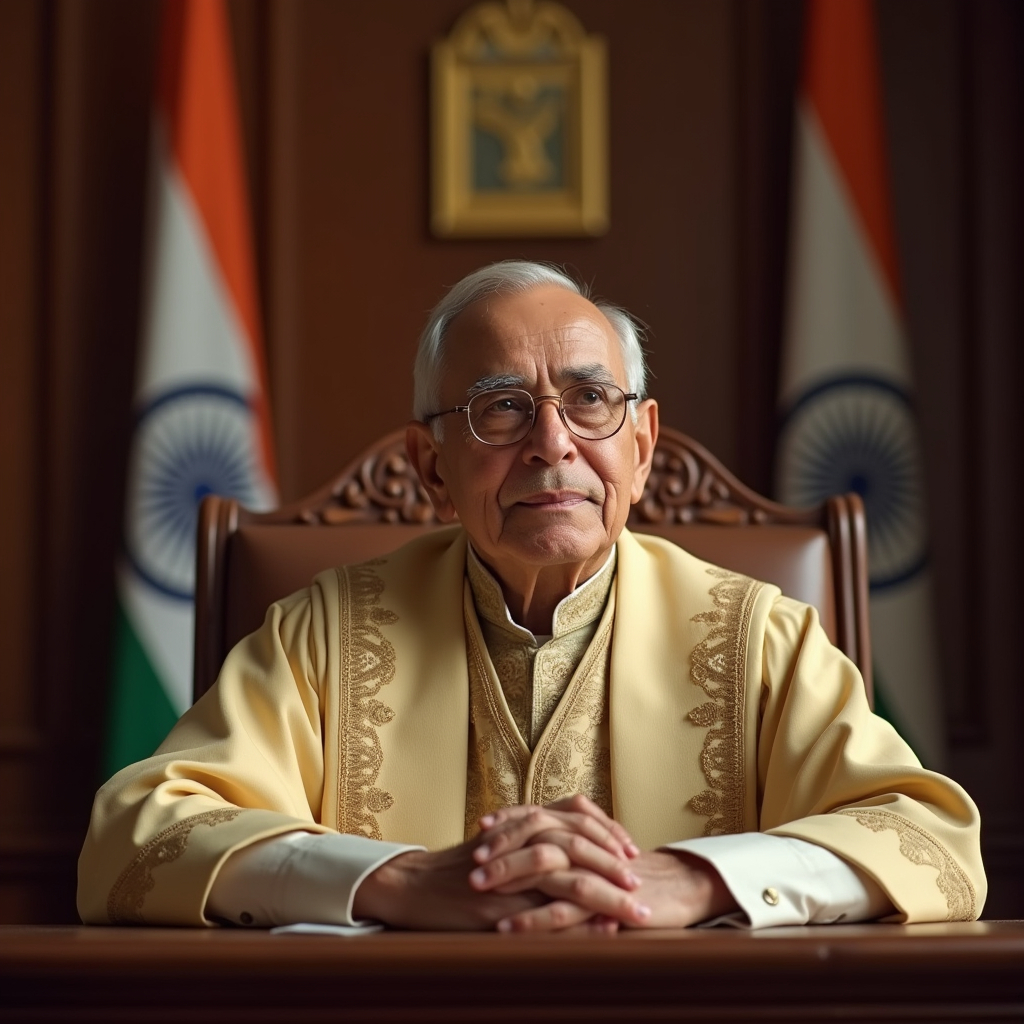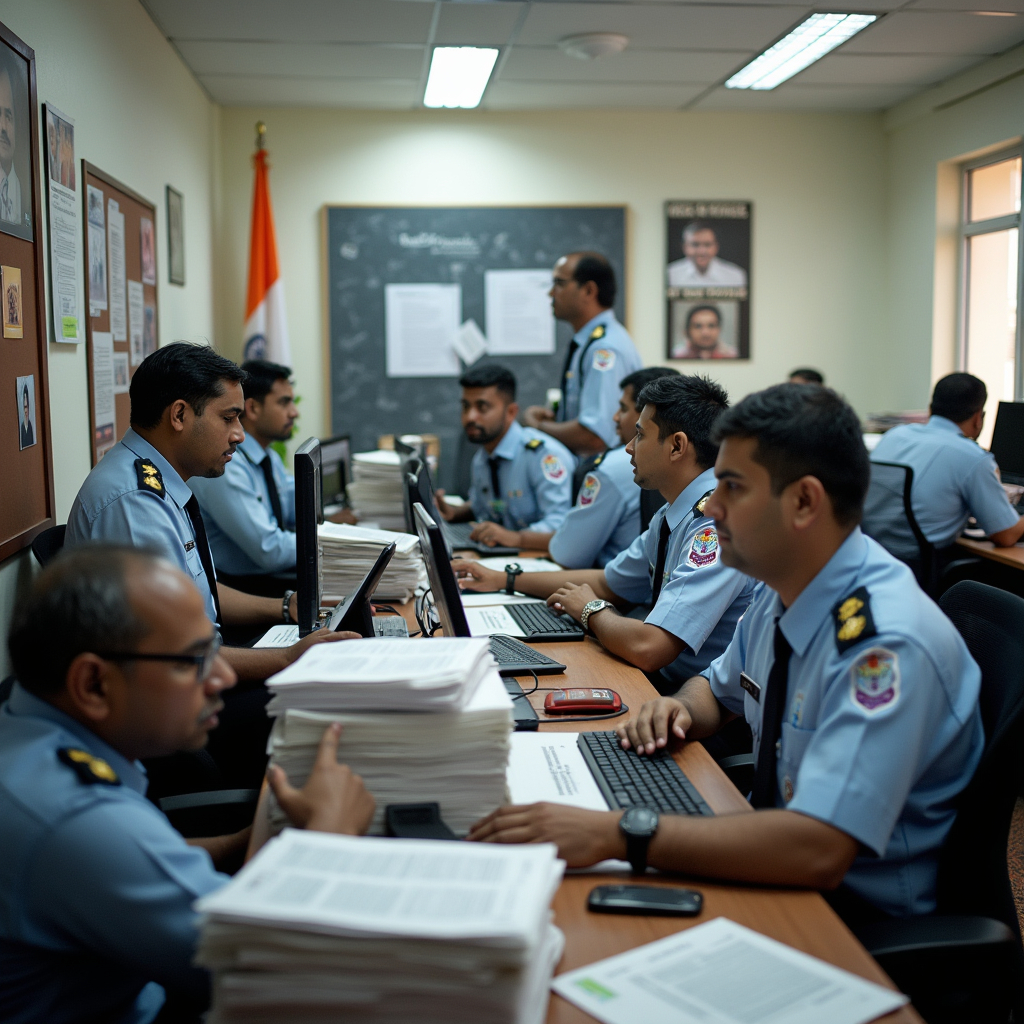The article is written by Clara D’costa. It delves into the landmark case of V. Ravi Chandran vs. Union of India & Ors. (2009), where the Supreme Court of India addressed the complex issue of international child abduction and the wrongful removal of a child from one jurisdiction to another. The article meticulously examines the issues raised, the arguments advanced by the parties, and the Court’s decision, as well as the rationale behind it.
Table of Contents
Introduction
The case of V. Ravi Chandran vs. Union of India & Ors.(2009) is a landmark judgement by the Supreme Court of India addressing the intricate issue of child custody in the context of international parental child abduction. The case delves into the complexities of the Hague Convention on the Civil Aspects of International Child Abduction, 1980 and its application in India (a non-signatory country to the convention). The judgement also highlights principles concerning the welfare of the child, the jurisdiction of Indian courts in international child abduction cases, and the interaction between Indian law and international treaties.
This case is a pivotal reference for understanding how Indian courts approach international child abduction cases, particularly when the abduction involves countries that are signatories to the Hague Convention and those that are not. This judgement has significantly influenced subsequent decisions in similar cases and has provided a framework for handling such disputes with a focus on the child’s best interests and international cooperation.
Details of the case
Case name
V. Ravi Chandran vs. Union of India & Ors.
Petition number
112 of 2007
Type of case
Writ Petition
Name of the Court
Supreme Court of India
Bench
Mr. Justice R.M. Lodha, Mr. Justice Tarun Mukherjee, Mr. Justice B.S. Chauhan
Judgement delivered by
Hon’ble Mr. Justice R.M. Lodha
Date of the judgement
17th November 2009
Equivalent Citations
2009 INSC 1238, (2009) 15 S.C.R. 960
Name of the Parties
Petitioners: Dr. Ravi Chandran
Respondents: Union of India & Ors.
Represented by
Petitioner’s Counsel: Adv. Pinky Anand
Respondent’s Counsel: Adv. T.L.V. Iyer
Laws discussed
Article 32 of the Constitution of India, Guardians and Wards Act, 1980
Facts of the case
Dr. V. Ravi Chandran (the petitioner), an American citizen, married Vijayasree Voora (the mother) on December 14, 2000, in Tirupati, Andhra Pradesh, following Hindu rites. Their son, Adithya, was born on July 1, 2002, in the United States. The couple’s relationship eventually deteriorated, and in July 2003, Vijayasree filed for divorce in the New York State Supreme Court.
On April 18, 2005, a consent order was passed, granting joint custody of Adithya to both parents, requiring them to notify each other of the child’s whereabouts at all times. In July 2005, a formal separation agreement was established, which covered the distribution of marital property, spousal maintenance, and child support while aligning with the earlier joint custody order. The divorce was finalised on September 8, 2005, with the New York Supreme Court incorporating the existing custody arrangement into the final divorce decree.
In June 2007, following petitions from both parents, the Family Court of the State of New York modified the custody arrangement. This modification order granted joint legal and physical custody to both parents, with a stipulation that Adithya would reside with his father in Allen, Texas. The order further outlined that if the mother relocated to Texas within a 40-mile radius of the father’s residence, physical custody would alternate on a weekly basis. If not, she would have custodial time on alternating weekends, during school vacations, and specified holidays such as Diwali and Adithya’s birthday. Both parents were required to share Adithya’s summer vacation, with each parent having consecutive weeks with him.
The Family Court also mandated that the mother, if not residing within the 40-mile radius, would be responsible for transportation costs related to Adithya’s visitation. The custody order required the parents to exchange Adithya’s passport during custodial transitions and to provide each other with the address and contact number of wherever the child would be staying.
On June 28, 2007, the mother relocated to India with Adithya, informing Dr. Ravi Chandran that she would stay with her parents in Chennai. The petitioner approached the New York Family Court, which on August 8, 2007, granted him temporary sole custody, suspended the mother’s custodial rights, and issued non-bailable warrants for child abduction. Despite these orders, the whereabouts of Adithya and the mother remained unknown for over two years, leading to further legal actions by the petitioner.

The petitioner, Dr. Ravi Chandran, filed a petition in the U.S. for the return of his son under the Hague Convention on the Civil Aspects of International Child Abduction, arguing that Adithya’s habitual residence was the U.S., and his removal to India by the mother was unlawful. Meanwhile, in India, the petitioner filed a writ of habeas corpus before the Supreme Court, seeking the production and return of his son Adithya, challenging the mother’s illegal custody.
In response to the petitioner’s habeas corpus plea, the Supreme Court of India, on August 28, 2009, directed the Central Bureau of Investigation (CBI) to trace and produce Adithya before the court. The CBI, acting on this order, issued lookout notices nationwide. After extensive efforts, on October 24, 2009, the CBI located Adithya and his mother in Chennai. They were brought to Delhi and produced before Justice Tarun Chatterjee on October 25, 2009. The court ordered that Adithya be kept in the custody of the CBI until further hearings, and he was directed to be produced in court again on October 27, 2009, along with the mother.
The petitioner argued that returning Adithya to the U.S., where he had been living, was in the child’s best interest, emphasising that his removal to India was unlawful and traumatic. He contended that the mother violated the joint custody order granted by the New York Family Court. In defence, the mother cited concerns for her and Adithya’s safety, claiming irreconcilable differences with the petitioner made it unsafe to stay in the U.S. She argued that India was a safer environment for Adithya, and the petitioner’s legal actions were driven by revenge, not concern for the child’s welfare
However, the Supreme Court of India remained focused on the legal rights of the petitioner as the lawful custodian of the child, in line with the international obligations under the Hague Convention.The petitioner therefore filed a writ of habeas corpus for the production of his minor son Adithya and for handing over the custody and his passport to him.This indicates that the present case is under writ jurisdiction.
Issues raised
- Was the removal of Adhitya from the United States to India wrongful and did it violate Ravi Chandran’s custodial rights?
- Whether the principles of the Hague Convention on the Civil Aspects of International Child Abduction should be applied in India, despite India not being a signatory to the convention?
- Whether the husband i.e the petitioner should be allowed to keep the custody of the child?
- Whether an Indian court can conduct an elaborate inquiry on the question of custody or by dealing with the matter summarily, order the parent to return custody of the child?
Arguments of the parties
Petitioner
The counsel for the petitioner, Adv. Pinky Anand, argued that taking the child away from the petitioner from the United States to India was illegal and violated his custodial rights. The counsel further contended that the principles of the Hague Convention, although not ratified by India, should be considered in the interest of international comity and the welfare of the child.
The petitioner emphasised that Adhitya’s habitual residence was in the United States and that his removal disrupted his stability and well-being. They further laid emphasis on the importance of maintaining the child’s habitual residence and the negative effects of moving a child away without the other parent’s permission.
The counsel for the petitioner further argued that allowing such actions without proper legal recourse could set a dangerous precedent, encouraging parental abduction as a means to resolve custody disputes. The petitioner also pointed to various international cases where the Hague Convention principles were applied to return abducted children to their country of habitual residence.
Respondent
The counsel for the respondent no.6 Adv. T.L.V. Iyer, argued that bringing Adhitya to India was justified due to the strained marital relationship and concerns for the respondent no.6 and the child’s safety. They further argued that the Indian courts had jurisdiction to decide on the matter and that the welfare of the child should be the paramount consideration. The respondent no.6 via her counsel also highlighted that Adhitya had adapted to life in India and it would be in his best interest to remain with his mother in India.
They further emphasised the protective measures taken in the child’s best interest, arguing that the child’s immediate environment and emotional well-being were better secured in India. They pointed out that Adhitya had established social ties, adapted to his new surroundings, and any abrupt change could adversely affect his mental and emotional health.

The respondent no.6 further, through her counsel, raised several objections, including allegations of deprivation of basic rights, failure to provide medication, denial of education, unstable environment, and child abuse against the petitioner. Mother also contended that American courts lacked jurisdiction and their orders could not be enforced in India.
Laws involved in this case
Article 32 of the Constitution
This Article guarantees the right to move the Supreme Court for the enforcement of fundamental rights and empowers the Court to issue various writs to protect these rights. Article 32(1) provides that an individual has the right to approach the Supreme Court directly for the enforcement of their fundamental rights. This provision ensures that every citizen has a direct recourse to the highest judicial authority in the country for the protection of their rights. It embodies the principle that where there is a right, there must be a remedy.
Article 32(2) empowers the Supreme Court to issue directions, orders, or writs, including:
- Habeas Corpus
- Mandamus
- Prohibition
- Quo Warranto
- Certiorari
These writs serve as powerful legal tools to enforce the fundamental rights guaranteed by the Constitution. Each of these writs has a specific purpose and application and is aimed at providing protection against violations of fundamental rights.
Writ of Habeas Corpus under Article 32
Under Article 32, the writ of Habeas Corpus holds a unique and crucial place in the protection of personal liberty. The term habeas corpus is derived from Latin, meaning “you shall have the body.” It is a judicial mandate requiring that a person detained or imprisoned be brought before the court to determine the legality of their detention. The writ of habeas corpus has its roots in English common law and has evolved over centuries as a fundamental safeguard against unlawful detention. Its incorporation into the Indian legal system reflects the importance of individual liberty and the need for judicial oversight over executive actions.
The primary purpose of the writ of habeas corpus is to secure the release of a person unlawfully detained or imprisoned. It serves as an effective remedy against arbitrary detention by the state or any other authority. The writ can be issued against both public authorities and private individuals who illegally detain another person.
In this case the Supreme Court of India dealt with a habeas corpus petition filed by V. Ravi Chandran. The petition was filed to secure the return of his minor son, Adhitya, who was allegedly wrongfully removed from the United States and brought to India by mother, without the petitioner’s consent.
Hague Convention on the Civil Aspects of International Child Abduction, 1980
This treaty aimed at protecting children from international abduction by providing legal remedies for their prompt return to the country of habitual residence. This convention emphasised the need to respect the custodial rights given by the court and discouraged a parent from relocating their children across borders.
The court did not directly rely on this convention, however, it relied on the precedents that adopted these principles. Further, the court ordered the return of the child, Adithya, to the United States, aligning with the convention’s goal of restoring the status quo prior to the wrongful removal. By requiring the respondent to comply with the consent order from the Family Court of New York, the court emphasised the importance of adhering to pre-existing custody arrangements, consistent with the convention’s intent to prevent unilateral changes to custody orders.
Additionally, the court’s directive for the petitioner to cover travel expenses and arrange accommodations ensures the logistical feasibility of returning the child, akin to the convention’s provision for taking appropriate measures to secure the return of the child. The stipulation that the petitioner should request the dropping of warrants and refrain from pursuing criminal charges against the respondent also aligns with the convention’s spirit of prioritising the child’s return over punitive actions against the parent.
By addressing the practical and legal challenges in returning the child to the United States and respecting the existing custody order, the court’s approach indirectly reflects the Hague Convention’s principles, focusing on the child’s welfare and the prompt restoration of lawful custody arrangements.
Guardians and Wards Act, 1890
This Act governs matters related to the custody and guardianship of children in India. It emphasises the welfare of the child as the paramount consideration in determining custody arrangements. The Act provides a legal framework for Indian courts to adjudicate custody disputes, considering the best interests of the child.
Judgement of the case

The Supreme Court of India, in its judgement, held that the removal of Adhitya from the United States to India by the mother was indeed wrongful and in violation of Ravi Chandran’s custodial rights. The court emphasised the importance of adhering to international principles and conventions, even if not ratified by India, in the interest of justice and the welfare of the child. The court ordered the return of Adhitya to the United States, where the custody matter could be adjudicated by the competent court having jurisdiction over the child’s habitual residence.
The court further issued several orders to address the legal and practical aspects of the custodial arrangements. It was decreed that each party must provide the other with a phone number and address where the child will be located at all times, ensuring regular and reasonable telephone communication with the child. Additionally, each parent is required to provide the child’s passport during custodial exchanges and to sign and deliver any necessary written authorisations for the child’s travel within the Continental United States or abroad.

The court directed mother (Vijayashree Vora) to comply with the consent order dated June 18, 2007, issued by the Family Court of New York, by returning with the child, Adithya, to the United States within 15 days and reporting to the American court. The petitioner was ordered to bear all travel expenses for the mother and Adithya and to arrange accommodation in the USA until further court orders. Furthermore, the petitioner must request that any existing warrants against the mother be dropped and refrain from pursuing criminal charges related to the consent order violation.
The court also stated that respondent no.6 is also required to provide her address and contact number in India to the CBI authorities and inform them of her departure date and flight details to the USA. In the event that mother fails to take Adithya to the USA within the specified time, custody of the child, along with his passport, will be restored to the petitioner to be taken to the USA. The child will then be a ward of the concerned court that issued the consent order, with mother having the option to seek a review of the custody arrangement from that court if she so wishes.
Rationale behind this judgement
In the case of V. Ravi Chandran vs. Union of India & Ors. (2009), the Supreme Court of India addressed whether a detailed inquiry into the custody of the minor, Adithya, was necessary, and if the parties should be directed to seek resolution from an appropriate forum in India. The Court concluded that such an inquiry was unwarranted, reasoning that Adithya, an American citizen born and raised in the United States, should be returned to his natural environment in the U.S., with his welfare and happiness being paramount considerations.
The Court observed that both parents had previously obtained a series of consent orders from competent courts in the United States regarding custody, parenting rights, and maintenance. Initially, the New York State Supreme Court granted joint custody to both parents on April 18, 2005, with a requirement for each parent to keep the other informed about Adithya’s whereabouts. This order was incorporated into subsequent legal documents, including a separation agreement on July 28, 2005, and a divorce decree on September 8, 2005. On June 18, 2007, the Family Court of New York modified the custody arrangement but maintained joint legal and physical custody of Adithya.
The Court dismissed the claims made by respondent no. 6 (the mother) that the petitioner (the father) was unable to provide adequate medication, education, and a stable environment for Adithya, as well as allegations of child abuse, noting these accusations were baseless and unsupported by evidence. Despite residing in India for over two years, the mother had not taken any legal steps to challenge the orders of the Family Court of New York or seek sole custody of Adithya. Although she initially initiated proceedings under the Guardianship and Wards Act in India, she later withdrew them.
Emphasising the importance of comity of courts and the relevant facts, the Supreme Court concluded that custody issues should be adjudicated by the courts in the United States, Adithya’s habitual residence. The Court ruled that Adithya’s best interests required his return to the United States, finding no evidence that returning would harm him. Although Adithya had been in India for nearly two years, he had not established any roots due to frequent relocations between schools and residences. The Court underscored the need for prompt resolution of custody matters to prevent a child from establishing roots in the country of removal. The petitioner had filed the habeas corpus petition without delay; however, due to the mother’s constant relocations, it took over two years to serve notice and produce the child in court.

The petitioner further assured the Supreme Court that he would cover all travel expenses and provide living arrangements for the mother in the United States until the necessary court orders were issued. He also promised to adhere to the existing custody orders, request the dismissal of warrants against the mother, refrain from pursuing criminal charges for violating consent orders, and cooperate with any legal proceedings initiated by the mother in the United States. Additionally, he had secured school admission for Adithya in Texas.
The Supreme Court’s decision was guided by the principles of the Hague Convention on the Civil Aspects of International Child Abduction, which aims to ensure the swift return of children wrongfully removed from their habitual residence. Although India is not a signatory to the Hague Convention, the Court acknowledged that the principles of the convention serve as valuable guidelines in resolving international child abduction cases. Ultimately, the Court held that returning Adithya to his native country was in his best interests, reaffirming the importance of resolving custody disputes in the jurisdiction of the child’s habitual residence.
Relevant judgements referred to in the case
Smt. Surinder Kaur Sandhu vs. Harbax Singh Sandhu & Anr, (1984)
In this case the Supreme Court emphasised on the jurisdictional aspects in international custody disputes and held that the law of jurisdiction is closely connected to the well-being of the spouses and the welfare of the child should govern matters of matrimony and custody. The father’s act of removing the child to India was seen as an attempt to deprive the English Court of its jurisdiction, which was gravely detrimental to the peace of the matrimonial home.
Application in the present case
- In the present case the Supreme Court applied the principles from Smt. Surinder Kaur Sandhu vs. Harbax Singh Sandhu and Anr., (1984) to determine the appropriate jurisdiction for the custody dispute. The court recognised that Adithya, an American citizen born and raised in the United States, had his natural habitat in the United States.
- The series of consent orders regarding Adithya’s custody, issued by competent courts in the United States, further reinforced the United States as the appropriate jurisdiction for resolving custody issues.The Supreme Court held that it was in Adithya’s best interest to be returned to the United States, aligning with the principles of comity and the welfare of the child.
- The court acknowledged that adjudicating the custody issue in India, when American courts had already passed consent orders, would not serve Adithya’s welfare or the principles of judicial comity.
Mrs. Elizabeth Dinshaw vs. Mr. Arvand M. Dinshaw and Anr. (1987)
In this case the court addressed situation wherein children were wrongfully moved from one country to another and recognised the need to apply international principles to prioritise the best interests of children. The Court held that the removal of a child should not have a detrimental effect on the welfare of the child and stated that these actions should not be rewarded or used to undermine the custodial arrangements made by courts.
Application in the present case
- In the case of V. Ravi Chandran vs. Union of India & Ors. (2009), the Supreme Court applied the principles from Mrs. Elizabeth Dinshaw vs. Mr. Arvand M. Dinshaw (1987) to address the wrongful removal of Adithya from the United States to India by his mother.
- The court reaffirmed that the wrongful act of removing Adithya from his habitual residence in the United States should not be rewarded or used to undermine the custody arrangements already established by competent American courts.
- By emphasising this principle, the Supreme Court ensured that the removal of Adithya did not alter the existing custody arrangements or provide any advantage to the mother for her unlawful act.
- The court’s decision to return Adithya to the United States aligned with the principle that the wrongful removal of a child should not impact the enforcement of legitimate custody orders and that the interests of justice and the child’s welfare should prevail.
Re H.K. (an infant) (1966)
The Supreme Court, in its judgement in the present case, referred to the decision in Re H.K.(an Infant) (1966) wherein two American boys were taken away by their mother from New York to England despite the order of The Supreme Court of New York for the children to remain within a 50-mile radius of Peekskill. The Trial Judge ruled that the children should be returned to New York without delay, focusing on returning them to their habitual residence. The Court of Appeal affirmed this decision.
Application in the present case

- In the present case, the Supreme Court drew from the principles established in Re H. (Infants). The court reiterated that the wrongful removal of a child from one jurisdiction should not benefit the wrongdoer.
- Just as in Re H., where the English court prioritised returning the children to their habitual residence to resolve custody disputes, the Supreme Court emphasised that the removal of Adithya to India by his mother should not undermine the authority of the American court, which had jurisdiction over the custody matter.
- The court upheld the principle that wrongful acts should not influence judicial decisions and reinforced that the competent court of the child’s habitual residence should address custody issues. This approach ensured that justice was served and the interests of the child were protected, aligning with the established jurisprudence.
Re L (Minors) (1974)
The Court of Appeal in the Re L (Minors) (1974) addressed a case involving the custody of two children who were removed from Germany to England by their mother. The father sought the return of the children to Germany and the Court of Appeal upheld the trial court’s decision, affirming that it was in the children’s best interests to return to their native jurisdiction to prevent further entrenchment in new surroundings and to ensure custody issues were resolved by the appropriate court.
Application in the present case
- In the V. Ravi Chandran vs. Union of India & Ors. (2009) case, the Supreme Court referred to the principles established in In Re L (Minors) (1974). The court acknowledged the distinction between cases involving full factual investigations and those warranting summary return orders.
- The court emphasised that while the wrongful removal of a child is a significant factor, the paramount consideration must be the child’s welfare. Just as in In re L., where the Court of Appeal prioritised returning the children to their habitual jurisdiction for proper adjudication, the Supreme Court in Ravi Chandran reinforced that the American court, as the original jurisdiction, should resolve the custody dispute.
- This approach was aimed at ensuring that the child’s best interests were upheld and avoiding complications arising from establishing new roots in an unfamiliar environment.
Kernot vs. Kernot
In the case of Kernot vs. Kernot, a child born to an Italian mother and an English father was custody. The Italian court granted custody to the father, who brought the child to England. The mother initiated wardship proceedings in England, seeking the child’s return to Italy and a restraining order. Buckley J. emphasised that the domestic court must prioritise the child’s best interests, even if a foreign court has issued a consent order without examining the case’s merits. Buckley J. highlighted that the duty of the domestic court is even greater when the foreign court has not conducted a comprehensive evaluation of the case.
Mark T. McKee vs. Evelyn McKee (1951)
In Mark T. McKee vs. Evelyn McKee (1951), the Privy Council reaffirmed the importance of the child’s welfare in custody cases, stating that a court in Ontario could independently assess the best interests of the child, rather than adhering to foreign judgements. The court must evaluate all circumstances to ensure the child’s best interests are served, rather than simply adhering to the foreign custody order. The father appealed to the Privy Council’s decision.The Privy Council emphasised that the Ontario court was not obligated to automatically follow the foreign custody order but should give it proper weight in its independent judgement. The court must evaluate all circumstances to ensure the child’s best interests are served.
Re B’s Settlement (1940)
In Re B’s settlement (1940) 1 Ch. 54, the Chancery Division addressed a custody dispute involving an infant who had been made a ward of court. A Belgian father and British mother sought custody of their child from England, where the mother refused to return it. The Belgian court ordered the child’s return, but the mother defied, leading to fines and imprisonment. Morton J., hearing the application in England, emphasised the importance of the child’s welfare and the English court’s obligation to consider the child’s best interests, considering the child’s two-year stay in England.This case highlighted the English court’s authority to review and make independent determinations regarding custody to ensure the child’s best interests are served.
Harbin vs. Harbin (1976)
The Mark T. McKee vs. Evelyn McKee (1951) and the Re B–’s Settlement case were mentioned to consider the Harbin vs. Harbin (1976), wherein the children were moved illegally and forcefully by their father without any justification for his actions. The father failed to provide any reasons and hence the court held that the best interests of the children should be considered while making decisions and hence emphasised on the principle to protect children from wrongful removal during custodial battles and ordered for the children to be taken back to their mother.

Dhanwanti Joshi vs. Madhav Unde, (1988) 1 SCC 112
In this case, the Supreme Court of India stated that the welfare of a child and their best interests should be the primary focus in deciding the custody of the children of a divorced couple. The Court stated that despite the removal of children without a court order, the welfare of the children should be a significant factor and recognised the decisions taken by the English Courts that warranted the return of a child to a foreign jurisdiction without considering the welfare of the child.
Application in the V. Ravi Chandran vs. Union of India & Ors. case
- In the present case, similar principles were applied. The court acknowledged the need for the local court to assess the child’s welfare independently while giving due regard to the foreign court’s order.
- The concept of balancing the child’s established circumstances in the new country against the legal order from the country of origin was crucial. The decision reinforced that the primary criterion for custody decisions is the child’s best interests, consistent with the approach outlined in the Dhanwanti Joshi vs. Madhav Unde (1988) case.
Sarita Sharma vs. Sushil Sharma (2000) 3 SCC 14
In this case, the Supreme Court of India dealt with a complex child custody dispute arising from an international context. In this case, the mother moved with her children to India due to the excessive alcohol consumption of her husband in order to keep her children safe.
In this case it was ruled by the Supreme Court that the interests of the children should be the priority and not legal rights.It was decided by the Court that the concerns regarding custody shall be dealt with the court in the country that is closely connected to the children.
Analysis of the case
The judgement in V. Ravi Chandran vs. Union of India & Ors. (2009) is a significant development in Indian jurisprudence concerning international parental child abduction. It underscores the importance of considering international conventions and principles, even if not formally adopted, in the interest of justice and the welfare of the child. The case also highlights the challenges faced by Indian courts in dealing with international custody disputes and the need for a comprehensive legal framework to address such issues.
The Supreme Court’s decision to order the return of Adhitya to the United States was based on the principle that the child’s welfare is best served by maintaining continuity and stability in their habitual residence. This aligns with the objectives of the Hague Convention, which seeks to deter international child abduction and ensure the swift return of abducted children to their country of habitual residence.
The case also highlights the necessity for India to consider ratifying the Hague Convention on the Civil Aspects of International Child Abduction, which would establish a clear legal framework for resolving such disputes. Until then, Indian courts will continue to rely on the principles of the convention as persuasive guidelines in determining the best interests of the child in international abduction cases.
Conclusion
The case of V. Ravi Chandran vs. Union of India & Ors. (2009) is a landmark judgement that addresses the complexities of international parental child abduction and the application of international principles in Indian law. The Supreme Court’s decision to order the return of Adhitya to the United States underscores the importance of the child’s welfare, stability, and continuity in their habitual residence. The case also highlights the need for India to consider ratifying the Hague Convention on the Civil Aspects of International Child Abduction to provide a clear legal framework for resolving such disputes in the future.
The ruling in this case emphasises the significance of international comity and the imperative for Indian courts to consider global principles and norms, even if they are not formally integrated into the domestic legal system. This case explores the legal reasoning and deliberations undertaken by the Supreme Court in a cross-border custody dispute, carefully balancing the rights of parents with the paramount concern of child welfare.

Frequently Asked Questions (FAQs)
Is India a signatory to the Hague Convention on the Civil Aspects of International Child Abduction?
No, India is not a signatory to the Hague Convention on the Civil Aspects of International Child Abduction (1980). However, the principles of the convention were considered relevant and persuasive in this case.
The convention emphasises the prompt return of children who have been wrongfully removed from their habitual residence. Additionally, the court took into account the principle that the welfare of the child is the most important factor in custody decisions. This means that the child’s best interests, including their emotional and physical well-being, should be the primary concern in resolving custody disputes.
Why is the welfare of the child considered the paramount consideration in custody disputes?
The welfare of the child is deemed the most important factor in custody disputes because it prioritises the child’s well-being above all other considerations, including the legal rights of the parents. This principle ensures that decisions are made with the child’s best interests in mind, aiming to provide a stable, nurturing, and supportive environment for the child’s emotional, psychological, and physical development. By focusing on the child’s needs and stability, the legal system seeks to create a secure and consistent environment that supports the child’s overall growth and happiness.
How does unilateral relocation affect custody decisions?
Relocating your child’s residence without the consent of the other parent or any such order from the authorised court is called unilateral relocation. courts must consider the disruption caused by such moves, including the emotional and psychological stress on the child and the strain on relationships with the non-custodial parent.
The legal system evaluates whether the relocation was made in the best interest of the child or if it interferes with the child’s established routine and relationships. This evaluation helps determine whether the child should be returned to their previous location or if other custody arrangements need to be made.
What role does international law play in domestic custody cases involving cross-border issues?
International law plays a crucial role in domestic custody cases with cross-border issues by providing guidelines and frameworks for resolving disputes. In cases like V. Ravi Chandran vs. Union of India & Ors. (2009), even when a country is not a signatory to international treaties like the Hague Convention, the principles of these conventions can influence decisions.
These international guidelines help ensure that custody decisions are consistent with global standards for protecting children’s rights and welfare. Domestic courts may use these principles to address the complexities of international child abduction and to promote cooperation between countries in resolving custody disputes.
Can a parent who has wrongfully removed a child from their habitual residence be penalised?
Yes, a parent who has wrongfully removed a child from their habitual residence may face legal consequences. Such actions can be deemed a violation of custodial rights, and the courts may order the return of the child to their previous location. Additionally, the wrongful removal can impact custody arrangements and may be taken into account in determining future custody decisions. Legal penalties may include orders for the child’s return, adjustments to custody arrangements, and in some cases, legal actions against the offending parent for non-compliance with custody agreements or court orders.
What legal remedies are available for wrongful removal or retention of a child?
Legal remedies for wrongful removal or retention of a child typically include:
- Return Orders: courts may order the return of the child to their habitual residence if the relocation is deemed wrongful. This remedy aims to restore the status quo and allow the appropriate jurisdiction to make custody decisions.
- Custody Modifications: If the return of the child is not possible or practical, courts may modify existing custody arrangements to address the new circumstances and ensure the child’s best interests are protected.
- Legal Penalties: The offending parent may face legal consequences for violating custody agreements or court orders, which can include sanctions or legal actions to enforce compliance.
These remedies are designed to address the disruption caused by wrongful removal and to protect the child’s welfare and stability.
References
- https://ijtr.nic.in/V.Ravi_Chandran_vs_Union_Of_India_&_Ors_on_17_November,_2009.PDF
- https://digiscr.sci.gov.in/view_judgment?id=MjIwMjA=
- https://www.fcfcoa.gov.au/fl/children/relocation-travel#:~:text=If%20you%20relocate%20your%20child’s,case%20has%20reached%20an%20outcome.
Students of Lawsikho courses regularly produce writing assignments and work on practical exercises as a part of their coursework and develop themselves in real-life practical skills.
LawSikho has created a telegram group for exchanging legal knowledge, referrals, and various opportunities. You can click on this link and join:
Follow us on Instagram and subscribe to our YouTube channel for more amazing legal content.
 Serato DJ Crack 2025Serato DJ PRO Crack
Serato DJ Crack 2025Serato DJ PRO Crack










 Allow notifications
Allow notifications



